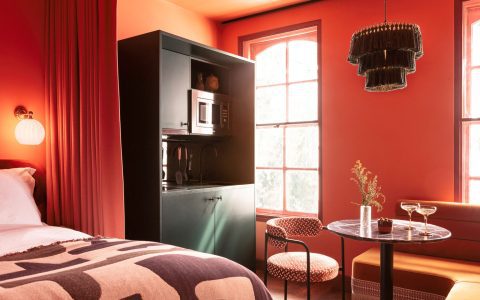Shipping container apartments offer a distinct alternative to conventional housing. Their viability depends heavily on context, budget, and execution.
Pros of Shipping Container Apartments
- Cost-Effective Foundations: Purchasing used containers offers a cheaper structural core compared to traditional framing methods.
- Modularity & Potential Speed: The inherent structure allows for efficient stacking and arrangement, offering faster site assembly timelines.
- Sustainability Aspect: Repurposing decommissioned containers diverts them from scrap yards, offering significant environmental benefits.
- Durability & Strength: Designed for harsh oceanic transport, containers possess inherent structural integrity, toughness, and pest resistance.
- Design Flexibility: The modular units can be arranged in various configurations to create unique spaces, though within dimensional constraints.
- Mobility Potential: Entire units can be relocated with specialized equipment, offering unique deployment options.
Cons of Shipping Container Apartments
- Significant Modification Costs: High fabrication expenses arise from insulation, utility installation (HVAC, plumbing, electrical), structural reinforcement after cutting openings, exterior cladding, and specialized labor. Final costs often approach conventional building expenses.
- Complex Insulation Challenges: Steel conducts temperature efficiently, necessitating meticulous interior or exterior insulation. This reduces interior space substantially and requires vapor barriers to prevent condensation and mold.
- Structural Integrity Concerns: Cutting openings for doors, windows, and internal connections compromises structural strength, demanding extensive engineering for reinforcement.
- Limited Space & Dimensions: The interior width is constrained (typically 7'8" internally for a 40ft unit), requiring creativity for layouts. Combining units improves this but increases complexity and cost.
- Environmental & Health Risks: Original shipping container floors are often treated with harmful pesticides. Interior surfaces may have residues from shipped goods. Exterior coatings frequently contain lead or chromates. Full assessment, sandblasting, and resealing are essential.
- Permitting Difficulties: Meeting building codes and obtaining permits for non-standard construction can be complex and time-consuming, as officials may be unfamiliar with the structural requirements.
- Perception & Resale Value: Overcoming the "livable storage container" stigma can be difficult. Potential resale value and financing options can also be negatively impacted.
Conclusion: Shipping container apartments can be viable, offering speed, eco-reuse, and design uniqueness. However, they are rarely cheap solutions due to modification costs and require expert engineering, insulation detailing, toxic material remediation, and rigorous permitting navigation. Careful feasibility analysis against conventional construction is essential.







